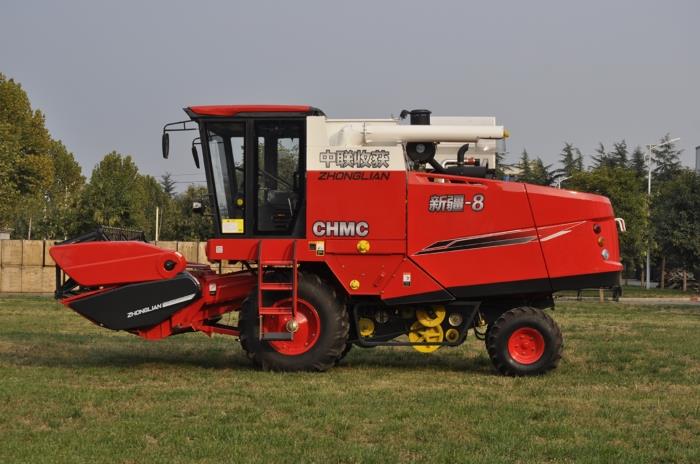The process of harvesting grain by machinery has two types of work, sectional work and joint work.
Segmentation
Segmentation is the process of dividing all harvesting processes with several harvesting machinery. If the harvester is used to cut the grain or use a baler to cut and bundle the grain, then use a grain thresher or manual degranulation and sorting operations. Segment harvesting is the use of a variety of machinery to complete cutting, baling, transport, stacking, threshing, cleaning and other operations.
Advantages: simple mechanical structure, low equipment investment, convenient maintenance and easy to promote.

Disadvantages: low labor productivity and large loss of harvest.
Two harvests
First cut the grain with a windrower and lay it on a 15-20cm cutting quilt. After 3-5 days of drying, the grain is cooked and air-dried, and then picked up with a grain combine harvester equipped with a picker, threshing, separation and cleaning operations.
Advantages: prolonged harvest time; increased grain yield and grade; reduced post-work burden.
Disadvantages: damage and compaction of the soil, fuel consumption increased by 7-10%; even the rainy days of grain strips easy to mold, sprouting.
Requirements: The cutting height is suitable (15-20); the laying is appropriate, the first and the last are connected; the cutting time is wax cooked.
Joint operation
The combined operation is to complete the harvesting, threshing, separation and cleaning operations in the field with a grain combine harvester, and finally obtain clean grains. Compared with the two, the joint labor has high labor productivity and low grain loss, but it consumes a lot of energy and has a lot of investment.
Combined harvesting is the use of combine harvesters to complete multiple operations such as harvesting, threshing, separation and cleaning in the field.
Advantages: high productivity, short operating cycle, low labor intensity and harvest accumulation, and good work quality.
Disadvantages: The machine structure is complex, the equipment investment is large, the machine utilization rate is low, the use technology is high, the harvesting cost is high, and the adaptability to the inconsistent grain dryness and maturity is poor.